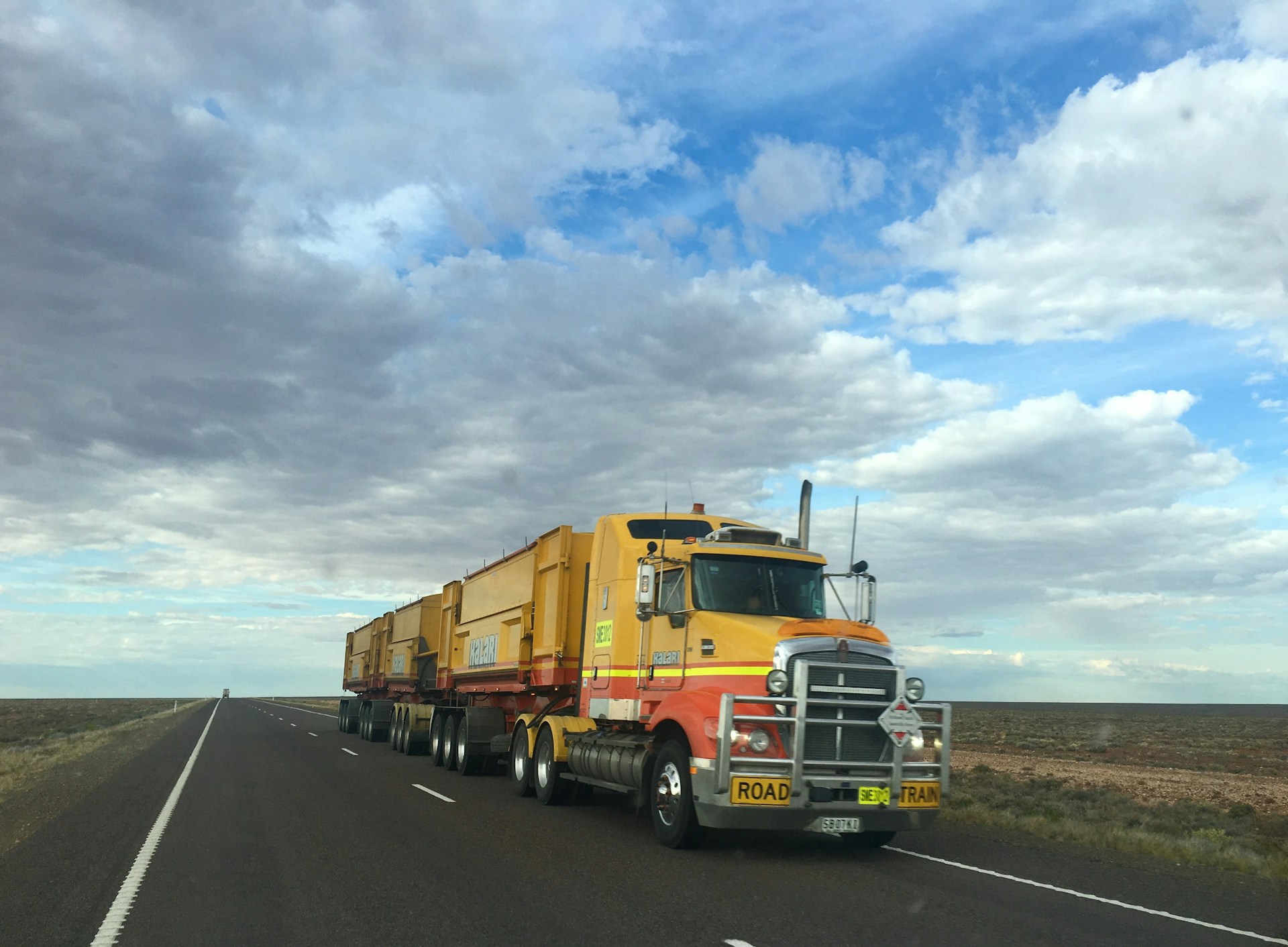TRUCK CALCULATORS
Commercial Truck Calculators: Expert Tools for Fleet Managers and Dealers

Commercial trucking is a high-stakes business where every penny counts. In the U.S. alone, there are roughly 13 million heavy trucks on the road (about 5% of all vehicles) and a freight market exceeding $532 billiongeotab.comgeotab.com. For fleet managers and truck dealers, understanding a truck’s true operating costs and market value is essential. Dedicated tools like commercial truck cost calculators and value calculators enable data-driven decisions – from budgeting for loan payments to setting resale prices. For example, TruckerCalculator.com offers a cost-per-mile and net profit calculator, allowing users to “analyze your profit and loss, not the gross”truckercalculator.com. These calculators help compare revenue versus expenses and estimate resale value based on mileage, age, and conditiontruckercalculator.comchrobinson.com.
Operating a truck involves many costs. A commercial vehicle cost calculator (or cost-per-mile calculator) breaks down these expenses so managers can pinpoint inefficiencies. According to industry studies, total U.S. trucking costs reached about $2.26 per mile in 2024fleetmaintenance.com. A breakdown of the major cost components might look like this:
| Cost ItemAvg $/mile (2024) | |
| Fuel | $0.48fleetmaintenance.com |
| Driver wages & benefits | ~$0.80 (wages)fleetmaintenance.com + benefits |
| Maintenance & repairs | ~$0.20fleetmaintenance.com |
| Equipment lease/purchase | $0.39fleetmaintenance.com |
| Insurance (liability/cargo) | ≈$0.10fleetio.com |
| Total Operating Cost | $2.26fleetmaintenance.com |
These figures (from ATRI and Fleetio reports) highlight that fuel and labor dominate costs, but maintenance, insurance, and equipment payments also add up. A calculator forces you to input all relevant costs – fuel usage, maintenance bills, wages, insurance, permits, etc. – alongside revenue and miles driven. The tool then computes metrics like cost-per-mile (CPM) and net profit. For instance, TruckerCalculator guides you to “pick the period, add the total gross [income], working days, total miles and all the expenses” so you can see where “a minor change in targets makes a difference”truckercalculator.com. By knowing that “gross earnings from trucks are not the same as net earnings or profits”chrobinson.com, operators can avoid the trap of only tracking revenue.
- Key cost factors: Fuel, driver pay, maintenance, insurance, taxes, and equipment payments.
- Fixed vs. Variable: Distinguish costs that stay constant (loan payments, insurance) from variable costs (fuel, tires, load-dependent labor).
- Cost-per-mile: Divide total costs by total miles to gauge efficiency. Industry data puts average U.S. CPM around $2.27fleetio.com.
By plugging actual data into a commercial vehicle cost calculator, fleet managers can run what-if scenarios. For example, increasing fuel efficiency by 1 MPG or reducing empty “deadhead” miles can dramatically lower your CPM. Tools like the C.H. Robinson profit calculator emphasize tracking loaded versus empty miles, noting that deadhead miles “are usually unprofitable”chrobinson.com. Reducing just 10% of empty miles can boost profitability substantially.
Using a Commercial Vehicle Cost Calculator
A step-by-step use of a cost calculator might look like:
- Gather Data: Record your truck’s monthly or weekly totals – miles driven, gross revenue, and every expense line (fuel, repairs, tolls, permits, driver pay, etc.).
- Enter Inputs: In the calculator (e.g. TruckerCalculator.com’s tool), select the time period and input all data fields. Be precise: even small expenses (oil changes, snacks, parking) add up over time.
- Analyze Output: The tool will compute cost per mile, net profit, and may compare to your plan. Some tools (like Trucker Calculator’s dashboard) can highlight your top 5 most and least profitable truckstruckercalculator.com.
- Iterate Scenarios: Adjust variables such as loading more miles, refinancing, or cutting costs to see the impact.
A good cost calculator will present results clearly. For example, TruckerCalculator’s Dashboard and Statistics modules visualize profit dynamics by truck and time periodtruckercalculator.com. Its Owner-Operator Cost Calculator feature lets small fleets track profit and CPM weekly or monthlytruckercalculator.com. Seeing that truck #7 had a negative net profit alerts the manager to investigate – maybe it had low utilization or unusually high expenses.
- Best practices: Enter accurate data – the more precise your inputs (truck specs, actual costs, realistic mileage), the better the insights.
- Regular updates: Re-run the calculation as rates change (e.g. fuel price spikes) or you upgrade equipment. Fleetio recommends re-evaluating vehicles periodically as conditions evolvetruckercalculator.com.
- Holistic view: Include all costs, even indirect ones. For example, total cost of ownership (TCO) adds capital and downtime costs to operating expensesfleetio.com.
For many fleets, a Total Cost of Ownership (TCO) approach is useful. TCO simply sums all expenses: acquisition, financing, maintenance, licensing, depreciation, downtime, etc. The formula often used is Acquisition Costs + Admin/Operating Costs + Depreciation + Downtimefleetio.com. Including these factors ensures you see the “true cost” of a truck over its lifefleetio.com.
Commercial Truck Finance and Loan Calculators
Another critical tool is the truck loan (finance) calculator. When expanding a fleet, managers must model loan payments and interest. A finance calculator asks for variables like truck price, down payment, interest rate, and term. It then outputs monthly payments and total loan cost. As one guide explains, a truck loan calculator is “more than a basic spreadsheet” – it’s a flexible planning tooltruckercalculator.com.
- Budget planning: Estimate if a new truck fits cash flow. For example, financing a $150,000 truck with 20% down at 5% over 60 months might yield a manageable payment (visible instantly with the tool)truckercalculator.com.
- Compare options: Adjust inputs to compare lenders. The tool lets you increase down payment or shorten term to see how payments and total interest changetruckercalculator.comtruckercalculator.com.
- Build equity: Owner-operators can track when they’ll pay off the loan and start building equity in the vehicle, rather than only tracking depreciation.
Financial calculators also detail payment breakdowns. For example, they can show how much of each payment goes to interest vs. principaltruckercalculator.com. A small increase in interest rate (say from 5% to 6%) can increase total interest paid by tens of thousands on a large truck loan. By using the calculator, a fleet manager can bargain for better terms or decide if a used truck (shorter loan term) makes more sense than new. As TruckerCalculator’s blog notes, even a higher payment on a shorter loan may reduce total interest and improve long-term cash flowtruckercalculator.com.
Commercial Truck Value Calculators
Estimating a truck’s resale or trade-in value is equally important. A commercial truck value calculator (or estimator) uses factors like mileage, age, condition, make/model, and even region-specific market trends to give an approximate market valuetruckercalculator.com. For example, if a truck has 250,000 miles and is well-maintained, the calculator compiles these data points to suggest a baseline valuetruckercalculator.com.
- Negotiation tool: Knowing approximate value gives fleet managers leverage. If a dealer offers a trade-in, you can check it against the calculator’s estimate to ensure a fair dealtruckercalculator.com.
- Timing replacements: Track depreciation. A value calculator lets you see how much value you lose each year. This helps decide when to sell or scrap a truck to maximize returnstruckercalculator.com.
- Competitive pricing: If selling privately or on auctions, an accurate estimate helps set a competitive asking price to attract buyers without leaving money on the table truckercalculator.com.
Advanced tools, often called value estimators, may tap into auction data and sales history. They can adjust for market fluctuations and unique specs (engine type, sleeper size, lift, fuel type, etc.) truckercalculator.com. For instance, electric trucks or ultra-fuel-efficient models might hold value differently, and sophisticated calculators account for these details truckercalculator.com.
Integrated Fleet Analysis
Modern software combines cost, finance, and value calculations. For example, TruckerCalculator offers an all-in-one platform: a cost-per-mile Calculator, detailed Dashboard, multi-period Statistics, and Financial Reports (P&L) truckercalculator.com truckercalculator.com. By linking to your bank statements, it can even automate expense categorization, saving accounting timetruckercalculator.com. Thousands of owner-operators use such tools, reporting up to 33% profit growth and hundreds of millions saved industry-wide truckercalculator.com.
The synergy of multiple calculators is powerful. As one industry article notes, combining finance, value, and cost tools “can greatly enhance the decision-making process” truckercalculator.com. For example:
- Holistic Planning: First use a finance calculator to gauge new truck payments; then use a value calculator on your old trucks to see trade-in equity.
- Risk Mitigation: Understand both your debt obligations and how fast your assets depreciate. If interest costs rise, you’ll already know how that affects margins.
- Strategic Upgrades: Regular valuation reveals when market value peaks. You can then replace trucks at an optimal time, avoiding selling when depreciation has eroded too much value.
In practice, an integrated platform shows you which truck is most profitable (highest net per mile) and which is costing you money truckercalculator.com. For example, a dashboard might highlight “Top 5 Profitable & Unprofitable trucks” in your fleet truckercalculator.com. This actionable insight drives better resource allocation (maybe sell underperformers, focus on high earners).
Tips for Maximizing Calculator Insights
To get the most from commercial truck calculators, keep these expert tips in mind:
- Use reputable tools: Start with a proven platform or well-reviewed calculator. Many free online tools specialize in semi-truck finance and valuation truckercalculator.com.
- Enter precise data: “The quality of your estimate depends largely on the accuracy of the data provided” truckercalculator.com. Double-check every figure – truck specs, odometer, fuel economy, maintenance costs.
- Update regularly: Economic conditions and vehicle conditions change. Re-run calculations at least quarterly or whenever you buy/sell a truck truckercalculator.com. For instance, rising interest rates or used truck prices will affect financing and valuation.
- Consider TCO: Don’t ignore indirect costs. Include downtime costs (e.g. lost revenue during repairs) and capital costs in your budget. TCO calculators remind you that even using cash has an opportunity costfleetio.com.
- Combine with professional advice: Calculators offer guidance, but consult accountants or appraisers for major decisions. For example, if a calculator shows a $50K depreciation, a used-truck appraiser can confirm before you trade in.
- Document all scenarios: Keep a record of different scenarios you’ve tested (e.g. 3-year vs 5-year loan, or sell-now vs sell-later). This historical insight helps refine your strategy.
In short, treat these calculators as decision-support tools, not crystal balls. They quantify assumptions so you can compare options. As one user story suggests, playing with a calculator’s sliders (down payment, term, etc.) can reveal that a slightly higher upfront payment saves much more interest long-term truckercalculator.com. Armed with these insights, you negotiate better and avoid surprises.
Conclusion
For fleet managers and truck dealers, mastering commercial truck calculators is a game-changer. These tools turn complex data into clear metrics – “cost per mile,” net profit, loan payment schedules, and market value estimates – empowering you to make informed, strategic decisions. By tracking every load, every expense, and every mile, you safeguard thin trucking margins. As the TruckerCalculator team notes, focusing on net profit (not just gross revenue) helps you “optimize your trucking business” truckercalculator.com truckercalculator.com.
Whether you’re evaluating a purchase, negotiating a sale, or streamlining operations, specialized calculators give you the analytical edge. When used consistently and accurately, they can improve profitability, control costs, and ultimately accelerate growth in a competitive industry truckercalculator.com truckercalculator.com. Invest the effort to learn these tools now, and you’ll steer your fleet toward greater efficiency and success.
Sources: Industry data and calculator guides from TruckerCalculator and fleet management experts truckercalculator.com truckercalculator.com truckercalculator.com chrobinson.com fleetio.com fleetmaintenance.com fleetio.com truckercalculator.com
14 DAYS MONEY BACK
No Overpaying
Free Setup







